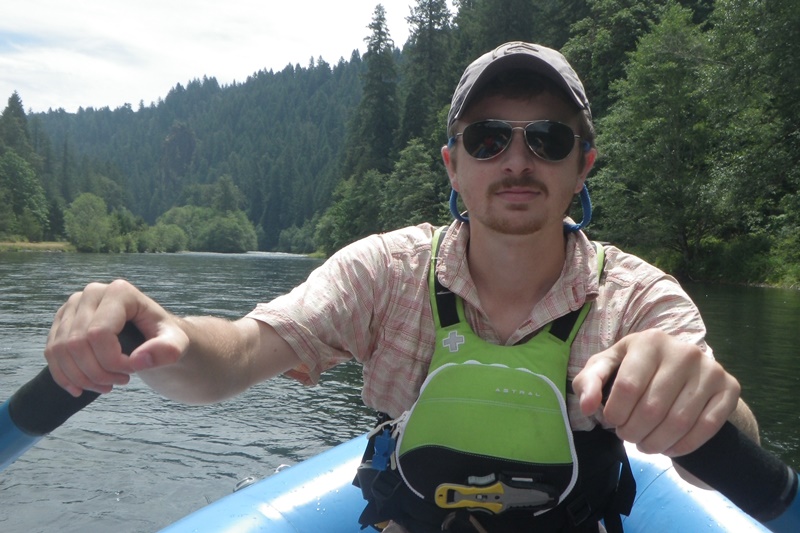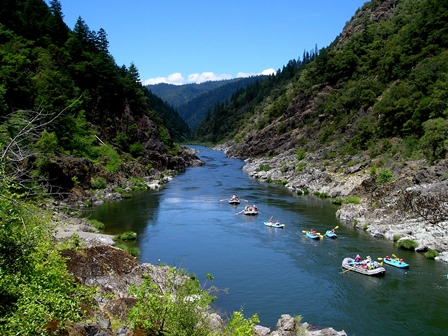
By Daniel Collay
I grew up just outside of Eugene on 5 acres and spent a large amount of my childhood in the outdoors, whether that be on my parents property playing in the creek or out exploring in my backyard forests, the Siuslaw and Willamette. While I thoroughly enjoyed the close proximity of these two beautiful national forests I also frequented the various BLM recreation sites and lands that dotted the landscape everywhere in between. From swimming in Whittaker Creek, to hiking and rafting the crystal clear McKenzie River, it seemed as a kid that there was limitless possibilities to get outside.
 |
| Rafting the Rogue River (Lesley Adams) |
Since I have attended SOU the past three years and work for the outdoor program, I have spent a large amount of time adventuring in Southern Oregon’s great expanse of BLM land. Rafting, kayaking, and fishing on various stretches of the Rogue and Klamath Rivers are some of my favorite activities. There are also numerous hikes close to Medford and Ashland such as Table Rocks, Pilot Rock, and Grizzly Peak which all offer amazing panoramic views of the rogue valley.
Heading past Jacksonville into the pastoral Applegate Valley and hiking the Sterling Mine Ditch Trail can give you a glimpse into Southern Oregon’s history of extracting mineral resources on public land. The trail runs along a ditch that once carried water for hydraulic mining of gold in 1877. The mine was the largest hydraulic mine in Oregon at the time. One thing that I have noticed in my time in Southern Oregon is that evidence of past and present mineral extraction on public land are noticeable virtually wherever you go. Whether it is massive tailings piles on the side of the Applegate River or a multitude of collapsed mineshaft entrances, our exploitation of the environment leaves a clear and nasty scar.
There seems to be endless opportunities for recreation in Oregon but there could potentially be more depending on which alternative is chosen for the new BLM Western Oregon Plan Revisions, also known as WOPR. The plan has some amazing new recreation opportunities but they may come at a price unless swift action is taken. When it comes to the greatest number of recreation areas as well as the most acreage, alternative D is the best option. While it has lots of good recreation areas it also includes more clear cutting, reduced streamside buffers, and increased OHV use. This alternative still leaves 271,000 acres of old growth unprotected from logging which is unacceptable. Cutting streamside buffers by up to half would harm our water quality, which in turn hurts fish and other aquatic life. As a lifelong resident of Oregon and someone who enjoys our states beauty I would like to see more recreation areas designated and more facilities built but it cannot be something we trade in exchange for environmental degradation.
Oregon Wild has a comment page where you can write to the BLM and voice your opinion. Visit the BLM page for an interactive map and detailed information about the plan. The comment period ends July 23rd so now is the time to speak up for our backyard forests and expanded recreation opportunities in Oregon.
Daniel Collay is currently a Conservation and Outreach Intern for Oregon Wild, working out of the Eugene office. He will be a senior this year at Southern Oregon University in Ashland majoring in Environmental Science & Policy with a Minor in Outdoor Adventure Leadership. He has also worked for the Schools outdoor program as the hiking and backpacking manager.

